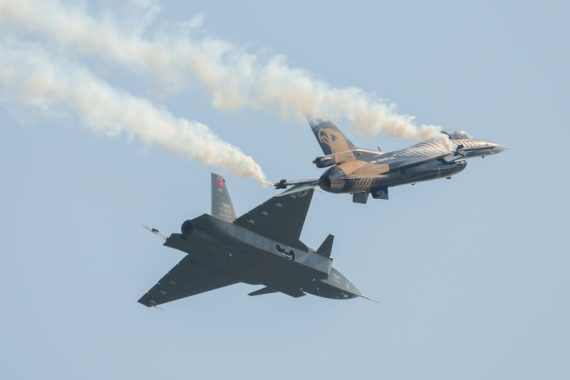A
holistic assessment of the defense industry as a comprehensive ecosystem, rather than the combat effectiveness of individual large platforms, will make it easier to understand its impact on the fight against terrorism. With the progress made, Turkey is now in a position to produce systems and subsystems that are vital in the fight against terrorism.
The establishment of a national defense industry, with the breakthrough achieved in the recent period, has strongly influenced Turkey’s defense strategies and the instruments used in this field. The technology-intensive dimension of the fight against terrorism is one of the most obvious indicators of this breakthrough. In the 1990s and 2000s, Turkey began to produce its own platforms and subsystems, which were considered essential for operations against the PKK and up to that point in time had to be procured from abroad.
This resulted in a number of important advantages, including the prevention of personnel losses, better intelligence gathering, access to hard-to-reach areas, maintaining the tempo of operations, and cost efficiency. In the process, Turkey has raised its offensive and precision strike capabilities to a higher level, particularly through developments in unmanned systems and national munitions. This development, in turn, initiated a process at the doctrinal level, which included an increased focus on targeting the so-called senior members of the terrorist organization.
The emergence of unmanned systems
The importance of armed and unarmed unmanned aerial vehicles (UAVs) becomes clear when considering the fight against terrorism, in general, and the geographical characteristics of certain areas in northern Iraq occupied by the PKK as safe zones. Military technological developments have provided various solutions in these areas, which are very difficult to reach with conventional forces. Operations that were previously limited to fighter aircraft such as the F-16 can now be carried out more flexibly and over longer periods with UAV systems. In this sense, UAV systems have played a decisive role in operations that require approaching the target in closed and difficult terrain.
By using UAV systems, the safety of the pilot’s life is not jeopardized, and, at the same time, the flight time of fighter jets and the cost of their ammunition are saved. Similarly, due to their characteristics, UAV systems have eliminated problems such as aerial resupply, and the inclusion of a large number of UAVs in the inventory has enabled uninterrupted surveillance of PKK targets. Such an opportunity paved the way for the rapid neutralization of PKK targets, especially the so-called senior members of the PKK. In recent years, the security forces and the MIT have carried out numerous operations in this way, and statements by members of the terrorist organization indicate that they are feeling this pressure.
It should also be noted that Turkey has adopted a continuous development line in the field of unmanned systems, working on complementary products that can meet all kinds of needs. For example, the Alpin, a rotary-wing UAV system or an unmanned helicopter developed by Titra, began providing logistical support to security forces in mountainous, hard-to-reach areas last year, which is a significant development. In the coming period, we can expect UAV systems to become increasingly capable of performing some of the functions of not only fighter aircraft such as the F-16, but also helicopter platforms such as the ATAK and Sikorsky.
PKK efforts to acquire military technology
Meanwhile, the risk of military technology products falling into the hands of terrorist organizations or non-state armed groups should always be considered. The concept of UAV attacks, popularized by DAESH in Syria and Iraq by planting explosives in commercial drones, has been seen in other countries in recent years and has become even more sophisticated in regions such as Yemen. In recent years, the PKK has made similar attempts at a rudimentary level, attacking Turkish military posts and tactical units on Turkish soil and in Iraq and Syria with improvised explosive devices attached to commercial drones or model aircraft.
Although the PKK has not achieved any results from these attacks, it is likely that it will continue to invest in this area as part of its long-term strategy in a security environment where UAV systems are becoming increasingly popular among terrorist organizations. Past examples show that the presence of a supporter/supplier plays an important role in the acquisition of such capabilities by terrorist groups or non-state armed actors.
Border security
Undoubtedly, one of the most important factors in the fight against terrorism is to ensure strong border security and to deter members of a terrorist organization from using certain points. It is also important to deploy low- and very low-altitude air defense systems on the border line against old-generation rocket and mortar systems that can be fired by terrorist elements across the border. The problems caused by both the infiltrations from the border line and rocket attacks from the other side have been clearly understood aftermath the civil war in Syria and ensuing proliferation of terrorist groups such as the PKK and Daesh.
The Turkish defense industry is carrying out extensive work to strengthen the border line, from advanced radar systems to cameras that can provide high-resolution surveillance and low-altitude air defense systems to patrol robots. Given the length of Turkey’s southern borders, it is reasonable to assume that unmanned systems will become increasingly important for this area, too. For example, there is a global trend towards the increased use of robot dogs in border areas, particularly for patrolling. While the U.S. is known to have various plans in this regard for the Mexican border, it is understood that similar efforts are underway in Turkey. Similar platforms may also be used in specific missions such as for cave operations against the PKK which are riskier due to the advantages the caves provide to terrorist components.
National ammunition
One of the most important factors in increasing operational effectiveness in the fight against terrorism is the production of indigenous smart munitions that meet Turkey’s specific needs. In the recent period, operations have been carried out with various domestic and national ammunition developed according to the nature of the target in counterterrorism operations, while at the same time studies have been carried out on guidance kits to increase strike capability and sensitivity.
Numerous products have been and are being developed, such as the national smart munitions (MAM) series, the Teber guidance kit, a wing-assisted guidance kit, and the Bozok laser-guided munitions, or the penetrating bombs that can be dropped from F-4s and F-16s. The fact that the munitions used by the strike platforms can be developed by the sector eliminates the possibility of open/implicit embargoes on foreign procurement due to political disputes and thus the risk of a reduction in the tempo of operations.
Recommended
The fact that Turkey has started to produce vehicles such as UAVs and helicopters, which were previously procured from abroad, has given a significant boost to counterterrorism operations. Given the asymmetric nature of this fight, the defense industry is expected to make an increasing contribution, especially in the field of robotic systems. As mentioned above, it is important to continue to develop systems that minimize the risk to human life, while still being able to perform tasks that have been described as “dull, dirty and dangerous.”
There are many platforms and technologies in the sector that can work together or are being developed to become interoperable. One of the clearest examples is the work being done to integrate unmanned land and air vehicles and use them together on the battlefield. Similarly, the ability of UAV systems and mini-UAV families to carry out different missions, such as reconnaissance/intelligence and strike, by communicating with each other through a division of labor, creates a force multiplier effect.
The effectiveness of Turkey’s defense products both in conflicts across different regions and in counterterrorism operations has enabled it to become one of the leading actors in the international defense market. In this context, it is no coincidence that, in addition to the overall growth of the sector’s exports, a number of African countries facing security challenges such as terrorism and separatist movements are purchasing a large number of products from Turkey, including armored land vehicles and various UAV systems.





